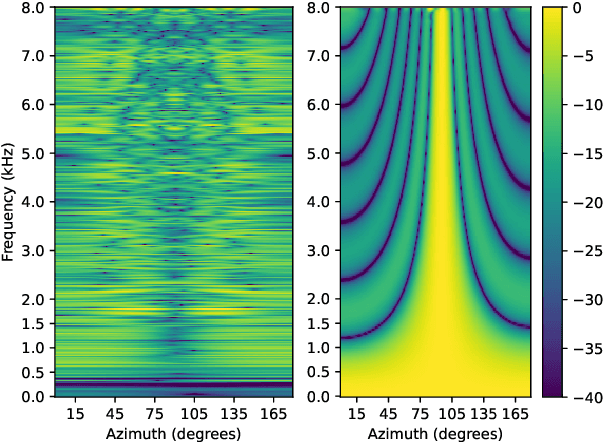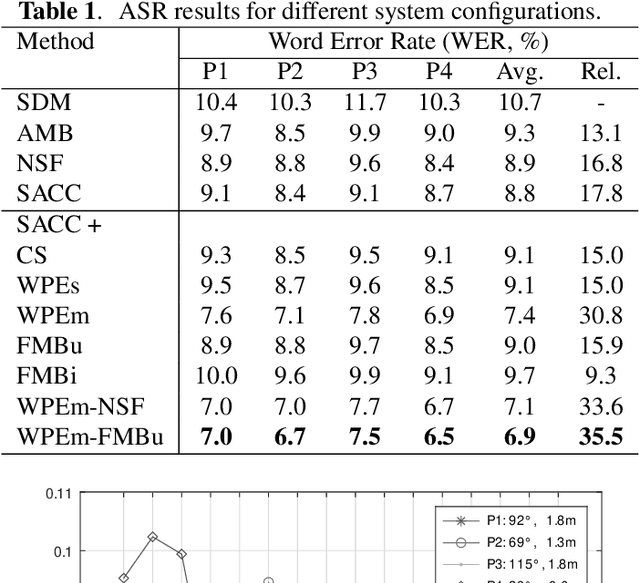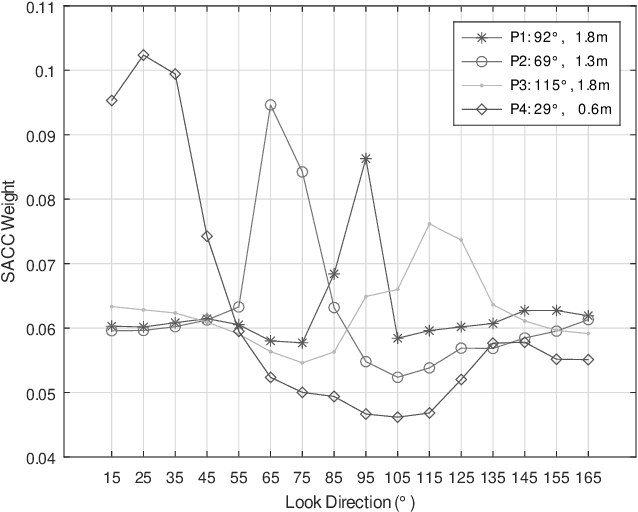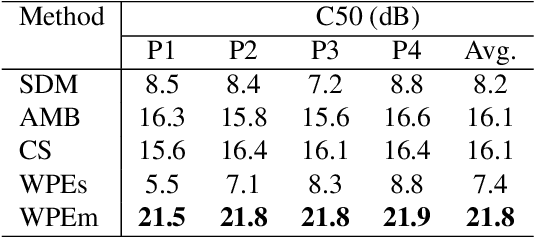Stanislav Yu. Kruchinin
XANE Background Acoustic Embeddings: Ablation and Clustering Analysis
Jul 08, 2024Abstract:We explore the recently proposed explainable acoustic neural embedding~(XANE) system that models the background acoustics of a speech signal in a non-intrusive manner. The XANE embeddings are used to estimate specific parameters related to the background acoustic properties of the signal which allows the embeddings to be explainable in terms of those parameters. We perform ablation studies on the XANE system and show that estimating all acoustic parameters jointly has an overall positive effect. Furthermore, we illustrate the value of XANE embeddings by performing clustering experiments on unseen test data and show that the proposed embeddings achieve a mean F1 score of 92\% for three different tasks, outperforming significantly the WavLM based signal embeddings and are complimentary to speaker embeddings.
Spatial Processing Front-End For Distant ASR Exploiting Self-Attention Channel Combinator
Mar 25, 2022



Abstract:We present a novel multi-channel front-end based on channel shortening with theWeighted Prediction Error (WPE) method followed by a fixed MVDR beamformer used in combination with a recently proposed self-attention-based channel combination (SACC) scheme, for tackling the distant ASR problem. We show that the proposed system used as part of a ContextNet based end-to-end (E2E) ASR system outperforms leading ASR systems as demonstrated by a 21.6% reduction in relative WER on a multi-channel LibriSpeech playback dataset. We also show how dereverberation prior to beamforming is beneficial and compare the WPE method with a modified neural channel shortening approach. An analysis of the non-intrusive estimate of the signal C50 confirms that the 8 channel WPE method provides significant dereverberation of the signals (13.6 dB improvement). We also show how the weights of the SACC system allow the extraction of accurate spatial information which can be beneficial for other speech processing applications like diarization.
 Add to Chrome
Add to Chrome Add to Firefox
Add to Firefox Add to Edge
Add to Edge